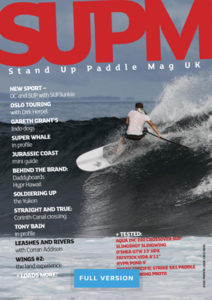Wearing a pair of gloves for canoeing, kayaking and paddle boarding is something all paddlers should consider, especially throughout the autumn and winter months. Here are five reasons why we would recommend you think about wearing gloves when paddling:
- Keep your hands warm and dry, especially throughout the colder months. Wearing a good quality pair of paddling gloves helps to protect your hands from the suffering caused when exposed to sharp wintery winds and the bitterly cold spray.
- Sun protection. If you are more likely to be paddling throughout the warmer months or on crisp sunny wintery days then a pair of paddling gloves can help protect your hands from the sun. Just look for a pair that offers a good degree of UV protection.
- Protect against blisters. A correctly fitted pair of paddling gloves may help prevent blisters from forming between your thumb and first finger. For maximum protection against blisters, it’s important to use the right gloves for the weather conditions. Plus, you want a pair that doesn’t absorb or hold water to avoid soggy hands.
- Protect against scrapes, knocks and cuts. A good pair of paddling gloves will come with some extra padding for your palms to help protect against scrapes and knocks that you might happen whilst paddling. Full finger gloves will also help protect your fingers from scrapes but also cuts that you might pick up on or by the water.
- Paddle grip. Wearing gloves whilst paddling may provide you with the ability to grip your paddle more confidently. You’ll want to pick a pair of gloves with a non-slip palm surface. Plus, look for a pair with some flexibility in the fabric to ensure a good comfortable fit.
What kind of gloves do you use for kayaking, canoeing and stand up paddle boarding?
This is another common question we get asked a lot. So when choosing a pair of gloves, you’ll likely come across these main types:
- Short Finger Gloves. These are a great option for those warmer weather paddles as they will provide good protection to your hand’s skin and paddle grip without your hands becoming too hot. We would recommend looking at Gill’s Short Finger Deckhand Gloves due to their quick drying properties and UV50+ protection.
- Long Finger Gloves. These gloves help prevent your hands from catching a chill from the wind or spray during the warmer months. They will also provide good grip and abrasion protection. Click here to take a look at Gill’s fantastic range of long finger gloves.
- 3 Season Gloves. Often constructed with lightweight neoprene this style is a great option to consider if you are thinking of paddling throughout autumn and early spring. They might even fare well throughout the winter months if you are going to be paddling hard and want to make sure your hands don’t get too hot. We’d recommend Gill’s 3 Season Gloves as they come with an extended cuff length to tuck underneath your outer layers to help eliminate your wrists being exposed.
- Neoprene gloves. These gloves, often 2/3mm thick, provide maximum warmth making them ideal for those cold wintery paddles. When looking for 3mm neoprene gloves make sure to pick ones with liquid sealed seams to protect against water ingress, like these from Gill.
- Pogies. Predominately used by kayakers. These gloves help provide good protection against the wind, spray and rain. They also allow you to maintain a direct grip with the paddle which some paddlers prefer. We would recommend checking out PeakUK’s nylon and neoprene pogies.
How to make sure you get the right size?
- According to Gill, gloves are most commonly sized according to width. To get the right size measure your dominant hand as this will typically be larger. To get a good measurement wrap a tape measure around just below your knuckles at the widest point. Then make a fist before taking the measurement.
How to care for and look after your paddling gloves?
- To look after your gloves, it is recommended that you hand wash them in fresh water after use. Then hang them to dry out of direct sunlight.
- They also need to fit correctly so that you can still access and use any safety kit. Zips on PFD’s, buckles on throwlines, and release tags on spraydecks, all need to be accessed and used with your gloves on.
So hopefully, we’ve explained why paddlers should consider wearing gloves for kayaking, canoeing and paddle boarding. We all want to make sure we have the best possible experience on the water, so there’s no harm in trying out a pair of paddling gloves or pogies to see if they make a difference.
If you would like more advice on paddle sport clothing and equipment be sure to check out our various choosing paddling gear articles.


 Go Paddling
Go Paddling Clear Access Clear Waters
Clear Access Clear Waters Paddles Up Training
Paddles Up Training Clubhouse
Clubhouse Services Login
Services Login

